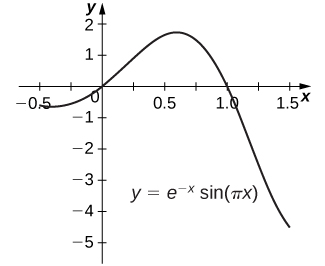| << Chapter < Page | Chapter >> Page > |
Compute the definite integrals. Use a graphing utility to confirm your answers.
(Express the answer in exact form.)
(Express the answer using five significant digits.)
Derive the following formulas using the technique of integration by parts. Assume that n is a positive integer. These formulas are called reduction formulas because the exponent in the x term has been reduced by one in each case. The second integral is simpler than the original integral.
Integrate using two methods:
a. b.
State whether you would use integration by parts to evaluate the integral. If so, identify u and dv . If not, describe the technique used to perform the integration without actually doing the problem.
Do not use integration by parts. Choose u to be and the integral is of the form
Do not use integration by parts. Let and the integral can be put into the form
Do not use integration by parts. Choose u to be and the integral can be put into the form
Sketch the region bounded above by the curve, the x -axis, and and find the area of the region. Provide the exact form or round answers to the number of places indicated.
(Approximate answer to four decimal places.)
(Approximate answer to five decimal places.)
The area under graph is 0.39535.

Find the volume generated by rotating the region bounded by the given curves about the specified line. Express the answers in exact form or approximate to the number of decimal places indicated.
about the y-axis (Express the answer in exact form.)
A particle moving along a straight line has a velocity of after t sec. How far does it travel in the first 2 sec? (Assume the units are in feet and express the answer in exact form.)
Find the area under the graph of from (Round the answer to two significant digits.)
2.05
Find the area between and the x- axis from to (Express the answer in exact form.)
Find the area of the region enclosed by the curve and the x -axis for
(Express the answer in exact form.)
Find the volume of the solid generated by revolving the region bounded by the curve the x -axis, and the vertical line about the x -axis. (Express the answer in exact form.)
Find the volume of the solid generated by revolving the region bounded by the curve and the x -axis, about the x -axis. (Express the answer in exact form.)
Find the volume of the solid generated by revolving the region in the first quadrant bounded by and the x -axis, from to about the y- axis. (Express the answer in exact form.)

Notification Switch
Would you like to follow the 'Calculus volume 2' conversation and receive update notifications?